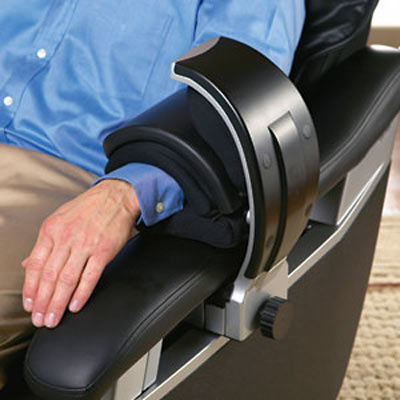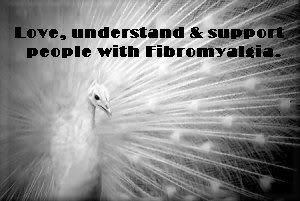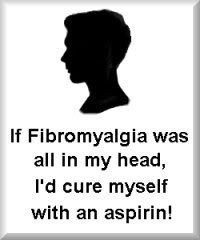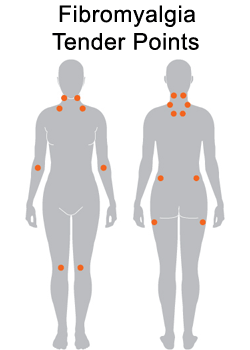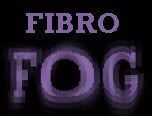Healing-Alternative, Complementary and Holistic Approaches
in the treatment of fibromyalgia focuses on the individual case history to relieve underlying problems
*If you are diagnosed with fibromyalgia, it is wise to seek out a health care provider who has specific experience in the management and treatment of this condition.
Physical therapy, relaxation techniques, herbal remedies, nutrition and diet therapy, exercise therapy, massage therapy, deep heat therapy, and biofeedback are all helpful in some cases.
Massage therapy is particularly beneficial for improved muscle function and pain relief. Stress is one of the underlying problems of fibromyalgia. Stress Management is covered in detail elsewhere.
Essential Oils:
Many essential oils help to reduce stress, a major contributor of fibromyalgia. Useful oils are: elemi, frankincense, geranium, jasmine, lavender, myrrh, and neroli.
This
sand bathing increases the body temperature with high rate of heart impact. Increasing blood circulation refreshes your body by discharging wastes and observing oxygen sufficiently into your body. And it can be used to treat neuralgia, rheumatism, lumbago, sub-acromial bursitis, arthritis and paralytic.
Soothing aromatherapy baths and massages can help to ease muscle and joint pain. Basil
, black pepper, elemi, eucalyptus, myrrh, peppermint, juniper oil, rosemary and pine essential oils to add to bath water.
Portable Home steam bath.
Massage Therapy is excellent for stress management and relaxation!
Those who got 30 minutes of massage two times a week for 5 weeks had less anxiety and depression and lower levels of stress hormones. Over time they reported less pain and stiffness, less fatigue, and less trouble sleeping.
Rub tea tree oil everywhere it hurts at least once daily; muscle pain takes about six weeks to disappear.
For hard-to-reach places on your back, you can lie down and roll your back on a tennis ball.
*compresses of herbs and chamomile are used in a warming back massage .
If specific tender points are particularly painful, you can use acupressure to help calm them down.
Many doctors will prescribe a number of different medications for the different symptoms and these may include strong painkillers, anti-depressants and muscle relaxants.
Other key treatment options are to reduce stress, get a sufficient amount of sleep, maintain a healthy and active lifestyle and exercise regularly.
Ultrasound therapy is a very effective form of treatment for Fibromyalgia as it works by sending high frequency sound waves into the injured or painful areas.
Hot Mud -Clay Fango Therapy
by Bibione Thermae
Mud packs are highly recommended in cases of degenerate locomotor system (back ache, pain in loins, worn out joints), for muscle pains and chronic rheumatism.
This exploits the beneficial effects that the application of thermal mud has on the organism. This is a kind of generalised thermotherapy with a high therapeutic effectiveness in the treatment of pain and aches.
Natural Supplements:
These natural supplements might be useful:
Magnesium,
Malic Acid,
5 Hydroxy tryptophan.
Acupuncture and frequency specific electrical stimulation might be useful for some.
Low Vitamin D can bring out fibromyalgia.
Be sure your doctor checks your blood level of 25 hydroxy vitamin D, and gets you up to a proper level.
Helpful Diet:
Daily doses of homemade, low salt soup made with magnesium rich vegetables, some beans, a little meat and vegetable or bone broth.
Eating a little red meat each day, especially for iron and zinc.
Cutting back on wheat and dairy, especially whole wheat products.
Improving digestion by eating organ meats occasionally and taking supplements or eating yogurt with helpful bacteria. (Liver has a very high vitamin A content so experts caution that it is not good to eat in large quantities and some people should avoid it altogether. However, organ meat has many important micronutrients not easily found in other foods.)
Reducing the amount of sweets in diet. A little honey is okay.
Avoiding foods with yeast.
Eating a wide variety of homemade, whole foods without preservatives.
Avoiding foods with caffeine - sodas, chocolate, tea, coffee, etc
Natural sunshine each day for vitamin D.
Herbal Remedies
Herbs can be used to help alleviate fibromyalgia by reducing inflammation, stimulating hormones, providing immune system support and eliminating pain.
St. John's wort is a natural antidepressant and influences the adrenal gland hormones to help relieve stress. St. John's wort affects nerves and is effective for sharp, shooting nerve pains. It also has antiviral properties. (Caution: Do not take if you are taking conventional antidepressants.-If you are on prescription antidepressants, do not take St. John's wort!.) Choose a standardized extract containing 0.3 percent hypericin and take 300 milligrams three times daily. *
Siberian ginseng is an energizing herb that can help resolve the fatigue associated with fibromyalgia. Choose a standardized extract containing 0.5 percent eleutheroside E and take 100 milligrams twice daily, one-half hour before breakfast and lunch. After two weeks, you can gradually increase the dosage as needed. After six weeks, take one week off, then take the herb for another six weeks.
Turmeric helps to reduce pain and inflammation. Take 400 to 500 milligrams three times daily.
Cayenne, echinacea, goldenseal, astralagus, myrrh and chaparral boost the immune system and improve circulation. Combine them as a tea or tincture, It may be helpful to mix it with juice for better taste.
Calendula taken orally in high doses has a positive effect in reversing symptoms of fibromyalgia.
A combination of burdock, slippery elm, sheep sorrel and Turkish rhubarb was shown good results in improving fibromyalgia.
Garlic is useful for detoxification and to enhance immune system function. Take 5,000 mcg of standardized allicin three times daily. Kyolic, aged garlic is preferred.
Ginkgo biloba improves circulation and brain function.
Devil's claw root is a natural anti- inflammatory used to treat rheumatic disorders. Take one 400 mg devil's claw root tablet daily.
Willow bark has anti-inflammatory properties and works as a painkiller.
Passion flower, valerian and hops teas have sedating and muscle- relaxant properties.
Dong quai is good for fleeting muscle and joint pains, especially if they are worse in damp conditions. Take 1 capsule daily. For women only.
Licorice root acts in the body like cortisone, but without the harmful side-effects.
Milk thistle extract, artichoke, turmeric and dandelion supports liver function.
Dandelion reduces frequency and intensity of pain and strengthens the connective tissue. Take 1 tbsp. juice or 1 cup tea twice daily for four to six weeks.
Black walnut aid in removing parasites.
Skullcap and valerian root improve sleep.
Teas brewed from burdock root, dandelion, and red clover promote healing by cleansing the bloodstream and enhancing immune function. Combine or alternate these herbal teas, and drink 4 to 6 cups daily.
Topical applications of cayenne (capsicum) powder mixed with wintergreen oil can help relieve muscle pain. Cayenne contains capsaicin, a substance that appears to inhibit the release of neurotransmitters responsible for communicating pain sensations. Use 1 part cayenne powder to 3 parts wintergreen oil. Cayenne can also be taken orally, in capsule form.
Licorice root supports the glandular system. Caution: If overused, licorice can elevate blood pressure. Do not use this herb on a daily basis for more than seven days in a row. Avoid it if you have high blood pressure.
Pine-bark and grape-seed extracts are natural anti-inflammatories that help to ease pain. Take 50 milligrams of either two to three times daily.
Ginger Tea.
Ginger is a good alternative to aspirin to relieve minor aches and pains. Steep 1 teaspoon of the grated root in 8 ounces of hot water for 10 minutes. Strain. Add honey for taste, if you like. Alternatively, take 1,000 to 2,000 milligrams of powdered ginger a day in capsule form with food.
People who have severe Fibromyalgia Syndrome (FMS) may do better if they completely avoid both MSG (monosodium glutamate) and also NutraSweet (aspartame), the artificial sweetener. Both glutamate (in MSG) and the amino acid, aspartic acid (in aspartame) stimulate pain augmenting receptors within the spinal cord. These are called NMDA receptors. Some individuals with Fibromyalgia improve very much on a Fibromyalgia diet that avoids MSG and aspartame.
In addition to these restrictions, we find that many people with chronic illness tend to do better with sensible diet therapy. Aim for five plus servings daily of multi-colored fruits and vegetables. (Nutrition science defines one “serving” as 1/2 a cup.)
Eat modest-size meals without excess fats, sugars or simple carbohydrates. Perhaps, easier said than done, but many patients have reported benefit from just a few weeks on this “Fibromyalgia diet”.
Occasionally, people with Fibromyalgia improve with the elimination of foods to which they personally are sensitive.
Wheat/gluten, milk, yeast, and sugar are occasionally culprits.
~ http://www.drpodell.org/fibromyalgia_treatments.shtml
Magnesium supplementation has produced very good results in treating both fibromyalgia and Chronic Fatigue Syndrome. This improvement may be due to magnesium's importance to serotonin function and the production of cellular energy.
Increase your consumption of the following foods that are good sources of magnesium:
Legumes
Tofu
Seeds
Nuts
Whole grains
Green leafy vegetables.
Many fibromyalgia sufferers also have irritable bowel syndrome. It is recommended that a comprehensive digestive and stool analysis be done for parasites.
3DHealthStore.com
Acupuncture is a technique of inserting and manipulating needles at the acupuncture points on the body with the aim of restoring health and well-being and providing pain relief.
People experience acupuncture differently,
with most feeling no pain or minimal pain as the needles are inserted. Some people are energized by treatment, while others feel relaxed.
Improper needle placement, movement of the patient, or a defect in the needle can cause soreness and pain during treatment which is why it's important to seek treatment from a qualified acupuncturist
Aquatic therapy works for the fibromyalgia patient.
Aquajogger is an excellent exercise. Aquajogger is a buoyancy belt that fits around the chest and allows the person to stand up in a swimming pool and either walk or run against the resistance of the water.
Remember to gently stretch all your major muscle groups for about five minutes-both before and after-you exercise.
An exercise therapy 3 times a week for 16 weeks in a warm pool could improve most of the symptoms of FM
Most people with fibromyalgia are reluctant to exercise because it initially causes more pain.
Avoid impact-loading exercises such as jogging, aerobic dancing, weight training, racquet sports, basketball, or any other activity that involves jumping up and down.
If someone in your family or friend is suffering from fibromyalgia: It is very important to be understanding and sympathetic to those suffering from fibromyalgia. Not believing that the afflicted person is in pain can add to their stress and worsen the condition.
For the young, it is important that teachers are informed and understand that the student, even though looking perfectly healthy, might not be able to participate in sports or other activities.
Mental and Emotional Health
Counseling is strongly advised with fibromyalgia patients. They need to learn to strike a healthier balance between work and relaxation along with establishing a slower pace, a healthier rhythm, in all of their activities.
Depression in fibromyalgia is a controversial topic. In support of the contention that fibromyalgia is not a psychiatric illness, some authors believe that the symptoms of fibromyalgia are not connected with psychological factors.
Others have determined that fibromyalgia is not a psychiatric disorder.
The depression associated with fibromyalgia is believed to result from pain, sleep deprivation, and dysfunction.
Disclaimer
The information in this site is provided for informational purposes only and in no way should be taken to be the provision or practice of physical therapy, medical, or professional healthcare advice or services. The information should not be considered complete or exhaustive and should not be used for diagnostic or treatment purposes without first consulting with your physical therapist, occupational therapist, physician or other healthcare provider. The owners of this website accept no responsibility for the misuse of information contained within this website.





